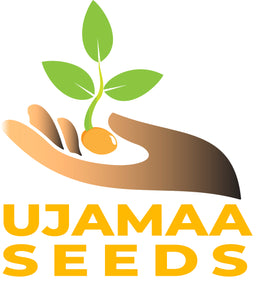Kaslala Multicolor Quinoa
Chenopodium quinoa
Seeds per pack ~ 200
Germination: 62% Jul 2024 (Packed for 2025)
DISCOUNTED -
Origins: KASLALA Multicolor Quinoa (Chenopodium quinoa) is a vibrant heirloom variety originating from the Andean highlands of South America, particularly in regions of Peru and Bolivia. Quinoa has been cultivated for over 5,000 years by Indigenous peoples who revered it as the “mother grain” due to its nutritional and cultural significance. The term “KASLALA” refers to a specific landrace blend traditionally grown in diverse altitudes and climates, reflecting the resilience and genetic richness of native quinoa varieties.
Introduced into Colorado, ca. 1980, fostered by John McCamant and farming partners at White Mountain Farm. Thanks to Wild Garden Seed for introducing it to us and providing high quality seed!
Appearance and Characteristics: This multicolor quinoa variety showcases a visually striking mix of seed colors—ranging from ivory, red, and rose to deep burgundy and black. The plants themselves are upright and branching, growing between 3 to 7 feet tall, with broad, toothed leaves that resemble lamb’s quarters (a close relative). KASLALA quinoa is noted for its robust adaptability, drought tolerance, and resistance to poor soils, making it ideal for regenerative and sustainable farming systems.
Culinary Uses: Once rinsed to remove its natural saponin coating (a bitter compound), KASLALA quinoa becomes a versatile ingredient with a fluffy texture and nutty flavor. The color diversity adds visual appeal to grain bowls, salads, pilafs, soups, and porridges. It can also be ground into flour for gluten-free baking or sprouted for raw food applications. The darker seeds tend to retain a firmer texture, while lighter seeds cook softer, offering a mix of textures in a single dish.
Growing Tips: Quinoa thrives in full sun and well-drained soils with a neutral to slightly alkaline pH. It is highly adaptable but performs best in cooler climates with daytime temperatures between 60–75°F. Direct sow after the last frost, spacing seeds 10–12 inches apart in rows 18–24 inches apart. Thin seedlings early and mulch to suppress weeds. Avoid high nitrogen fertilizers, which can encourage excessive leaf growth over seed production. Quinoa is naturally drought-tolerant once established and generally pest-resistant.
Harvesting Guidance: Quinoa is ready to harvest when the seed heads dry and leaves drop from the plant—typically 90–120 days after sowing. Test seed maturity by rubbing the heads: if seeds separate easily and feel firm, they’re ready. Cut the seed heads and hang them to dry in a warm, well-ventilated space. Once thoroughly dry, thresh the seeds by rubbing or flailing, and winnow to remove chaff. Rinse harvested seeds well to remove saponins before storing or cooking.
Introduced into Colorado, ca. 1980, fostered by John McCamant and farming partners at White Mountain Farm. Thanks to Wild Garden Seed for introducing it to us and providing high quality seed!



